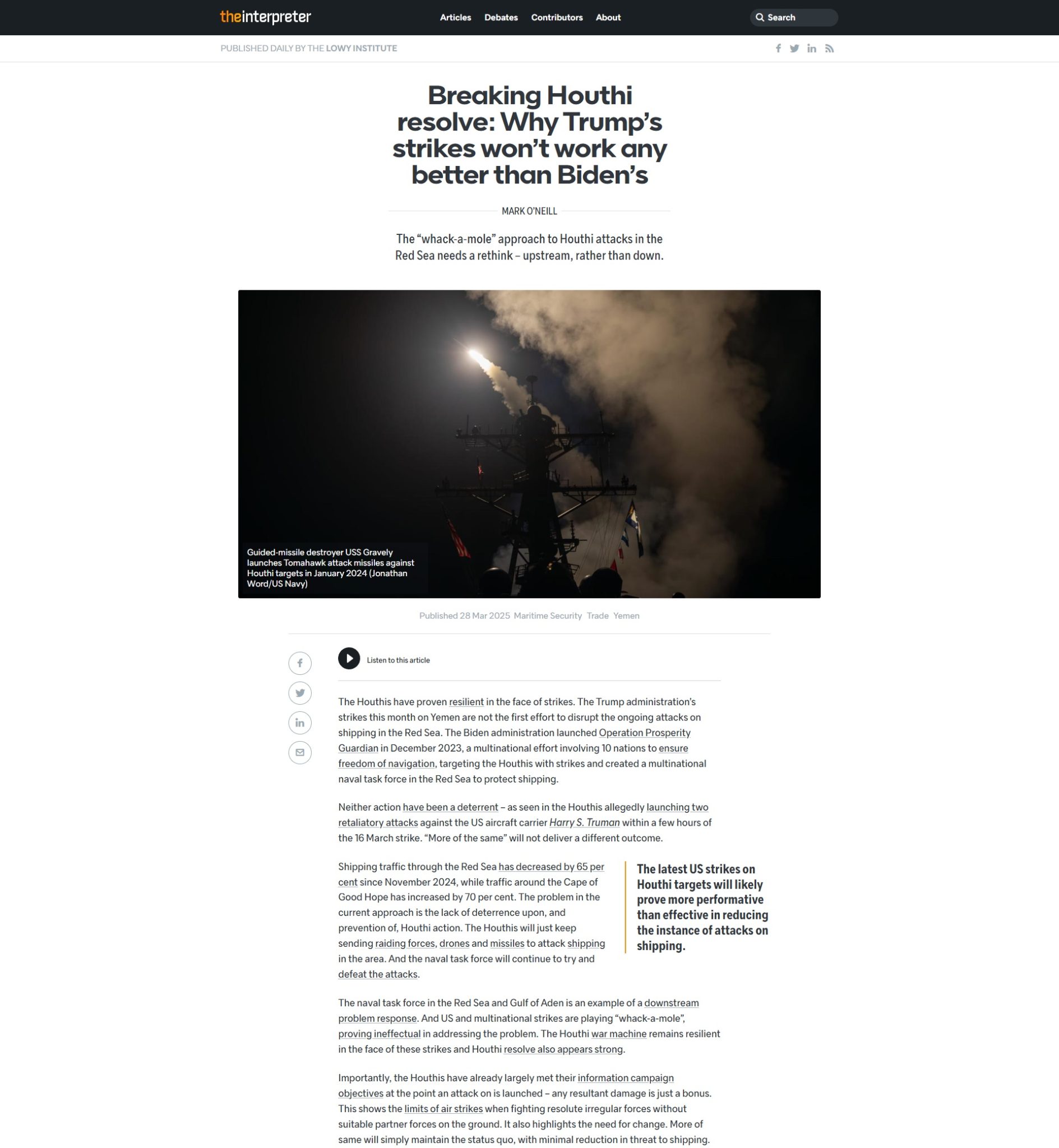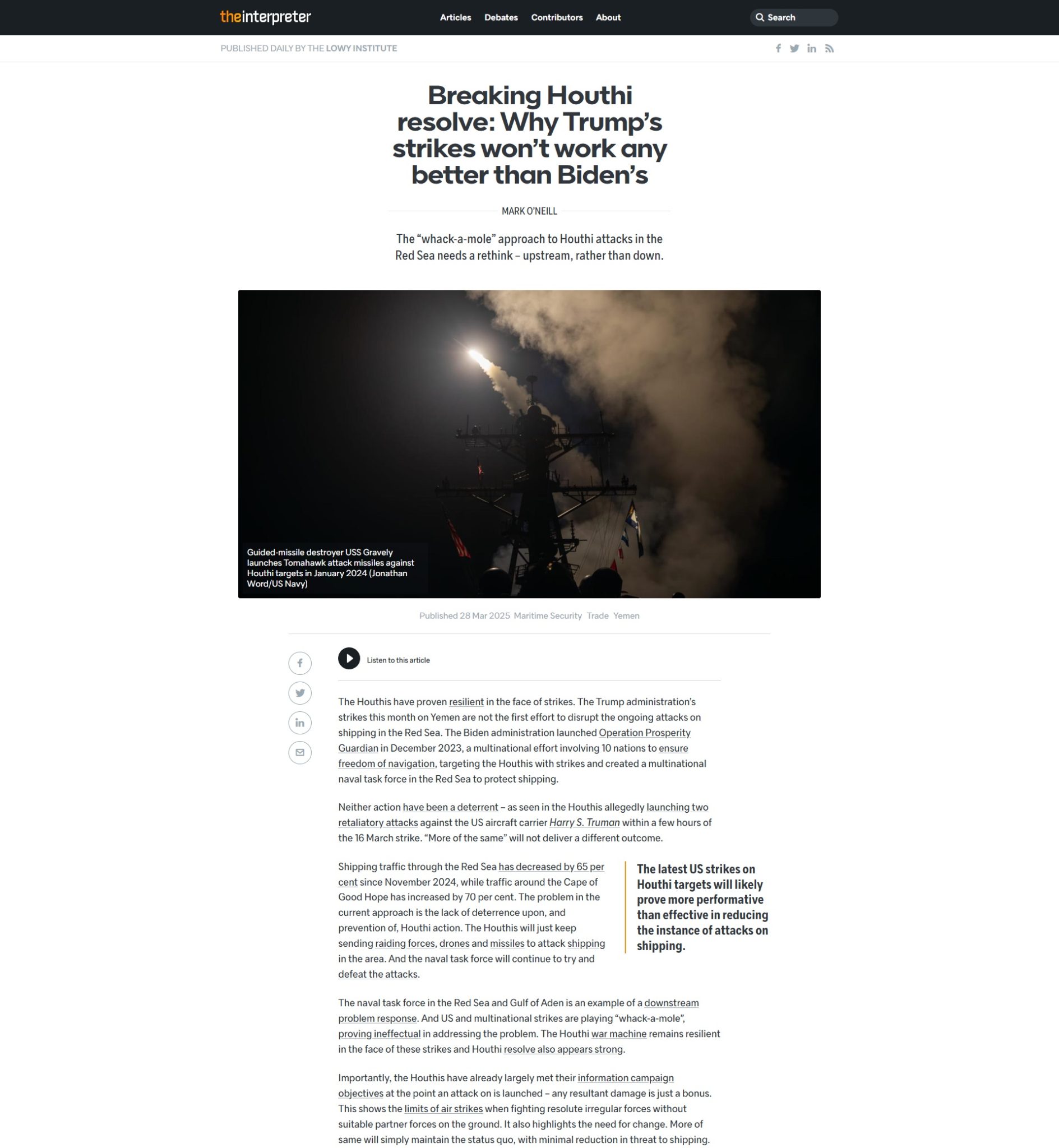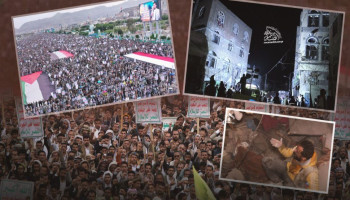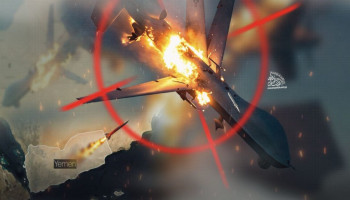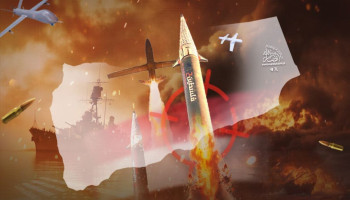Despite the American campaign described by the Trump administration as "incredibly successful," the Wall Street Journal reports that it has failed to achieve its primary goal of deterring the Yemenis. The newspaper pointed to the continued missile operations targeting the Israeli entity and the disruption of Zionist commercial ships in the Red Sea as evidence of this failure.
An American defense official attributed the failure of the campaign to the growing capabilities of the Yemenis, placing the blame on alleged Iranian support.
The newspaper admitted that despite the American airstrikes targeting leadership and strategic positions in Sanaa and Saada, they have not been sufficient to achieve deterrence, especially when the Yemenis have endured eight years of bombardment by the Saudi-led coalition.
Observers noted that although American tactics have become more coordinated, they continue to ignore previous lessons, asserting the impossibility of defeating the Yemenis through air raids alone, particularly given their hidden infrastructure in rugged mountainous areas and the popular support that may increase due to civilian casualties.

The Lowy Institute stated that the recent American strikes are more of a performance than an effective measure to curb ship attacks, describing them as a continuation of a flawed approach to dealing with the Yemeni issue. The institute also emphasized that the Yemenis remain resilient in the face of the American campaign, while the determination of the Houthis appears strong as well.
The institute elaborated on some Yemeni operations, highlighting a remarkable incident in which Yemeni forces launched missiles in broad daylight, targeting the American aircraft carrier Harry S. Truman and the Zionist entity's Ben Gurion Airport. The report described the attack as bold, not only embarrassing the Western defense arsenal but also exposing the falsity of American claims of being able to decisively deter the Yemenis.
The report also cited Sayyid al-Houthi’s remarks, where he pointed out that "aggression only increases our determination," previously warning: "America thinks its bombs intimidate us, but it forgets that we have endured eight years under the fire of an international coalition... and this experience has led to the improvement and development of our capabilities. Today, they are repeating the same mistake."
The writer addressed the failure of the Zionist air defense systems and the subsequent deployment of American "THAAD" defense systems to reassure the Israeli side and counter Yemeni missiles. The report noted that the American system dealt with two Yemeni missiles, which were intercepted before entering Israeli airspace. In the aftermath of the attack, images emerged showing debris—particularly rocket boosters—believed to belong to the THAAD missile defense system, according to the institute's report.
Critically, the writer pointed out that America, which spent billions on air and naval strikes, struggles to comprehend the Yemeni mindset. Every time its aircraft destroy a site, the Yemenis emerge from the rubble to announce a "new facility," and each time a commander is claimed to be eliminated, dozens more appear. Even the civilian casualties caused by indiscriminate strikes have turned into fuel for popular anger, bolstering the Houthis' legitimacy as defenders of the land in the eyes of millions of Yemenis.
The writer concluded that the recent American strikes on Yemeni army targets are likely to prove more of a display than an effective effort to reduce ship attacks, reiterating that such strikes represent a continuation of the flawed approach to dealing with the "downstream problem" while attempting to justify American failure by attributing it to what they term Iranian support. According to the writer, this support is said to have started during the Biden administration, and he emphasized that the Houthi missile threat cannot be resolved without addressing the "source" and adopting new strategies to challenge what he called the Houthis’ control and resilience on the ground.

The Spectator magazine focused on the growing Yemeni missile capabilities, asserting in its report titled "The Houthi Threat Will Not Vanish" that recent Yemeni missile operations demonstrate that they continue to pose a credible missile threat in the region, even as the United States expands its efforts to reduce their missile production and deployment capabilities.

A well-known American military website Military revealed that the U.S. Navy is working to reduce the high costs of countering Yemeni drones by equipping naval destroyers with two new experimental systems, "Roadrunner" and "Coyote," scheduled for deployment later this summer.
The website quoted Admiral Daryl Caudle, a commander in the U.S. Fleet Forces Command, who recently announced that the Ford carrier group would be deployed with two additional missile systems on the destroyers, specifically designed to intercept drones.
The website also highlighted the significant costs incurred by the U.S. Navy in combating Yemeni drones over the past fifteen months, leading to growing criticism. It pointed out that the American confrontation with Yemeni forces at sea has cost Washington half a billion dollars in missiles during that period, including the launch of 220 missiles, 120 of which were the SM-2 type, each costing around $2 million. Some of the more modern missiles used to intercept Houthi rockets cost as much as $28 million per missile, according to naval reports.
The site indicated that the U.S. Navy is testing laser weapons as a future solution, though its efforts in this area have not yet achieved tangible success.
It concluded that the primary goal of these U.S. steps is to preserve missile stockpiles for larger future battles, a stockpile significantly depleted in the confrontation with Yemeni forces during the naval conflict.



